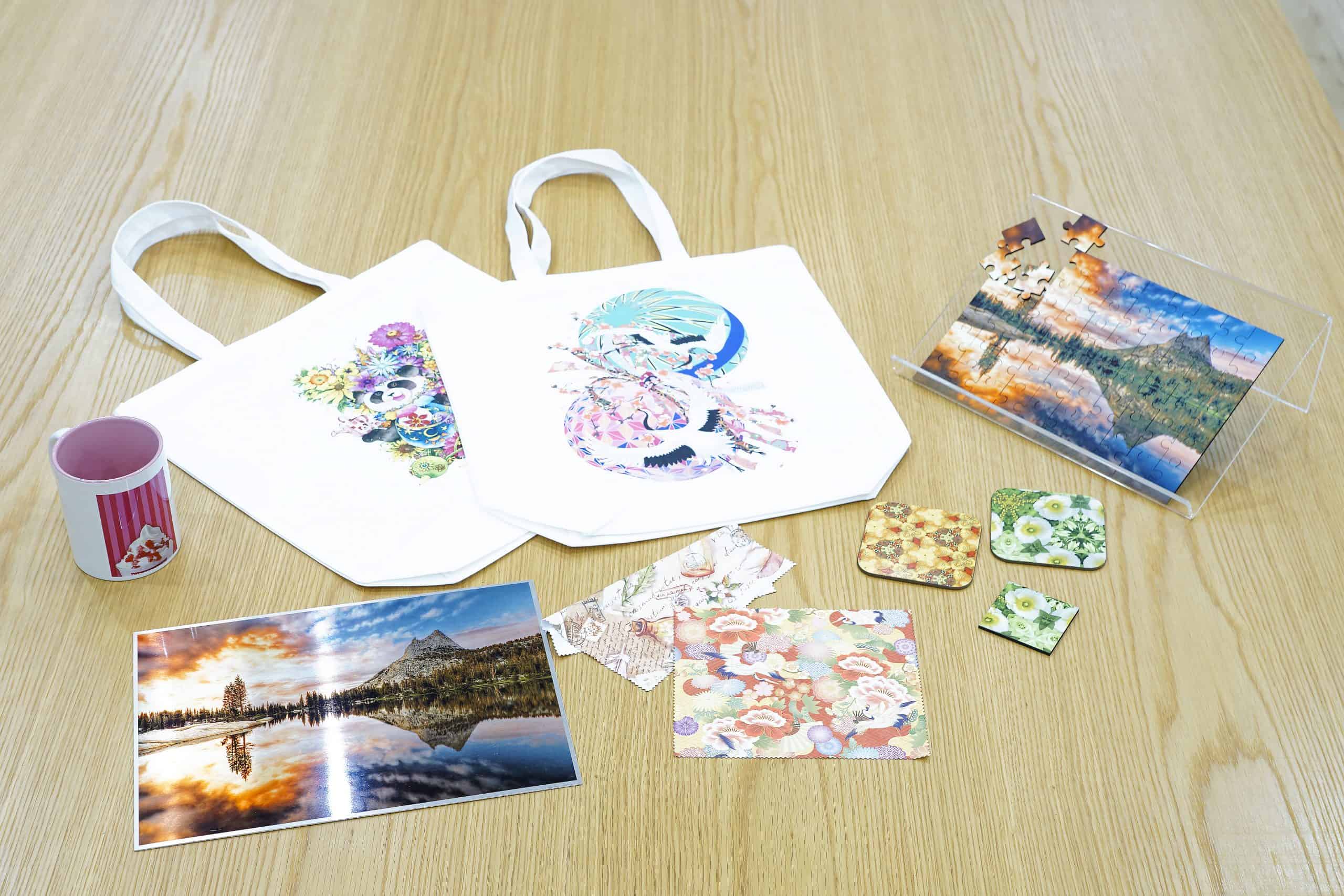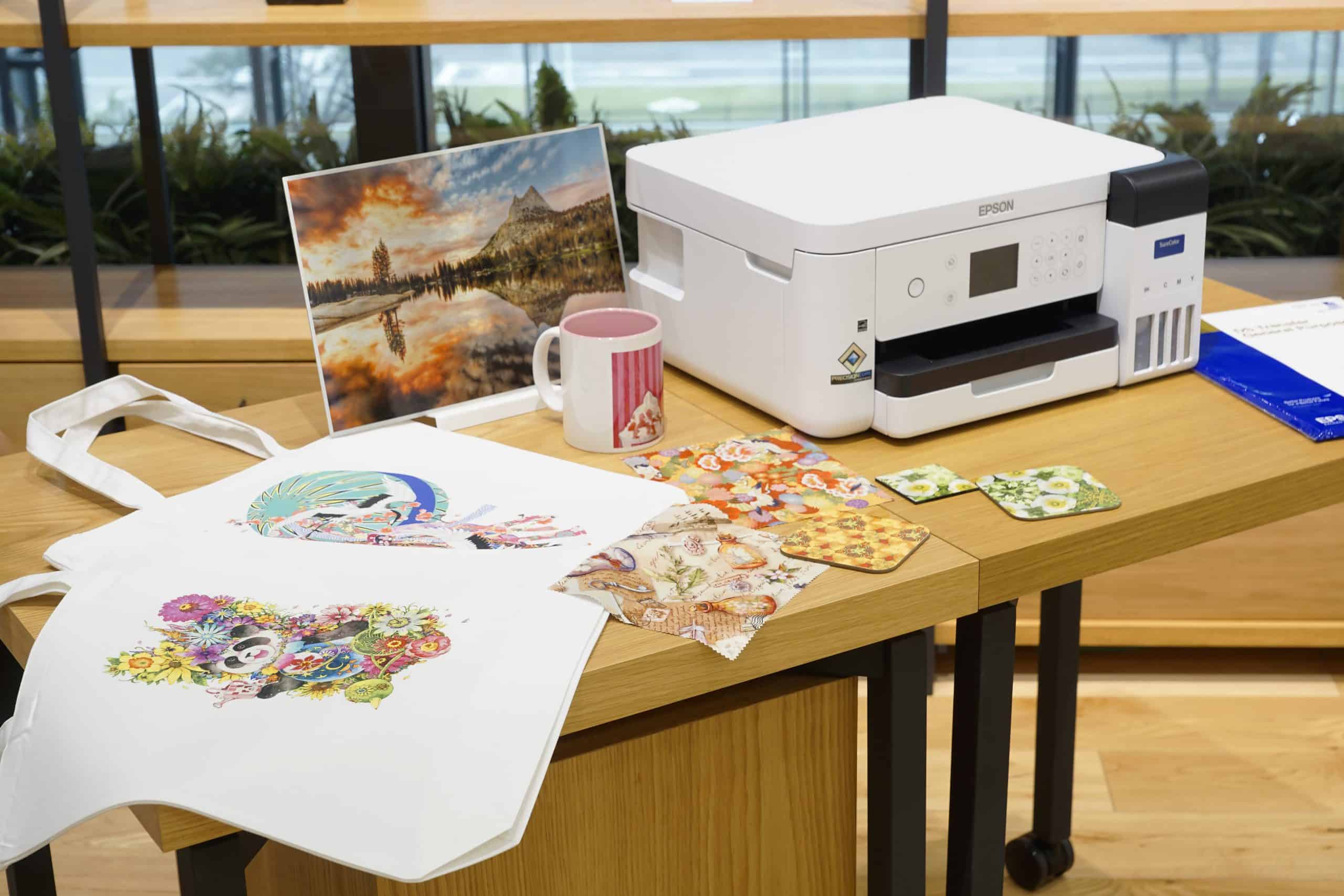Dye Sublimation has rocketed over the last 12 months with the release of the Epson SureColor SC-F500 in 2020 and, more recently, the launch of the Epson SureColor SC-F100. Now, this form of print is making its way into the homes and new small businesses of the general public. For those who are not familiar with print or dye sublimation, we have put together our top 10 tips to help you master this process.
1. Research
There is plenty of information on the internet regarding sublimation printing. Take a look at the process and what you’ll need to start before jumping into the world of dye sublimation.
This form of print is user-friendly and has an overall low total cost of ownership, however, it is still a professional genre of print and requires the correct tools and supplies. From your printer and press to your blanks and designs you will need to understand the full dye sublimation process.
Check out our Business in a Box, featuring the Epson SureColor SC-F500, and our SPARK bundles, including the Epson SureColor SC-F100, to get you started.
Both the Epson SureColor SC-F100 & SureColor SC-F500 require you to download a driver from Epson to ensure your printer knows how much ink to put down.

2. Invest in your interest
If you have an interest in dye sublimation and want to take it further, possibly start a business or introduce sublimation to your pre-existing business, you’ll need all the tools and some skills to go with them. Take a look at courses, books and videos with helpful tips to give you all the skills you’ll need.
3. Keep track of your process & what works for you
Dye Sublimation can be a trial and error process. Jot down the size of common blanks you use and the heat press settings which work for you.
Each new blank you try will present a new challenge and what works for some may not work for others.
Keep a note of your process to avoid making the same mistakes multiple times.
4. Consistency is key
Creating marketable products with dye sublimation can open up a second revenue stream and become a profitable hobby. However, if you plan to sell your dye-sub items, your products must be consistent. From inks, blanks and heat press settings, ensure your products are compatible with dye-sublimation printing and use OEM inks to ensure the best quality for your customers.
5. Application & Substrates
Research and select the correct media for the corresponding substrate to ensure superb transfer quality. Sublimation paper is designed to release sublimation ink in the heat transfer process, resulting in vibrant transfers on soft and rigid substrates.
Both rigid and textile transfer papers are available to work perfectly with your substates. If you are producing a lot of mugs, then pre-cut mug paper may be suitable.
If you would like to discuss media further, contact Lauren Parker, YPS Consumables Specialist via email at laurenparker@ypsprintsupplies.co.uk
Alongside media, your substrate is equally important. Your product must be a Polyester based textile or materials that have been treated for dye sublimation, for example, dye-sub compatible ceramic mugs and tiles. Research dye sublimation blanks to eliminate any issues with non-compatible products.
6. Use Protection When Heat Pressing
Teflon sheets and transfer paper are available to protect your heat press from ink bleeding and transfer. It is important to keep the base of your heat press clean and ink free to ensure all your prints are perfect and are not affected by the previous item pressed.
7. Flush Artwork
Depending on the aim of your design, you may wish to create an item that shows the artwork completely flush to all edges. Ensuring you are using heat press protection, scale your artwork to slightly larger than your blank and then press. This will cause ink bleeding which is why we recommend protecting your press.

8. Tricky Tiles
When heat pressing a ceramic tile, place the artwork face up in the press and put the tile on top, ceramic white side touching the artwork. Put a Teflon sheet on top of the tile, to protect the heat press.
The heat will carry through the ceramic tile and minimise the chances of a ghosting effect.
9. Learn from your mistakes
Dye sublimation and heat pressing can require practice, don’t be disheartened if you make a mistake, check your heat press settings and try again!
10. Ask For Advice
If you’re ever stuck with sublimating a tricky blank, ask the company you bought the blank from for tips or check out the product page which will have recommended heat press settings.
Dye sublimation can be a satisfying and rewarding process when performed correctly. From designing your artwork and printing to your dye-sublimation printer, to pressing your artwork and substrate to see the printed muted colours become vibrant with the heat from the press.
If you have any questions regarding the dye sublimation process our top tips haven’t answered, email us at info@yourprintspecialists.co.uk.
